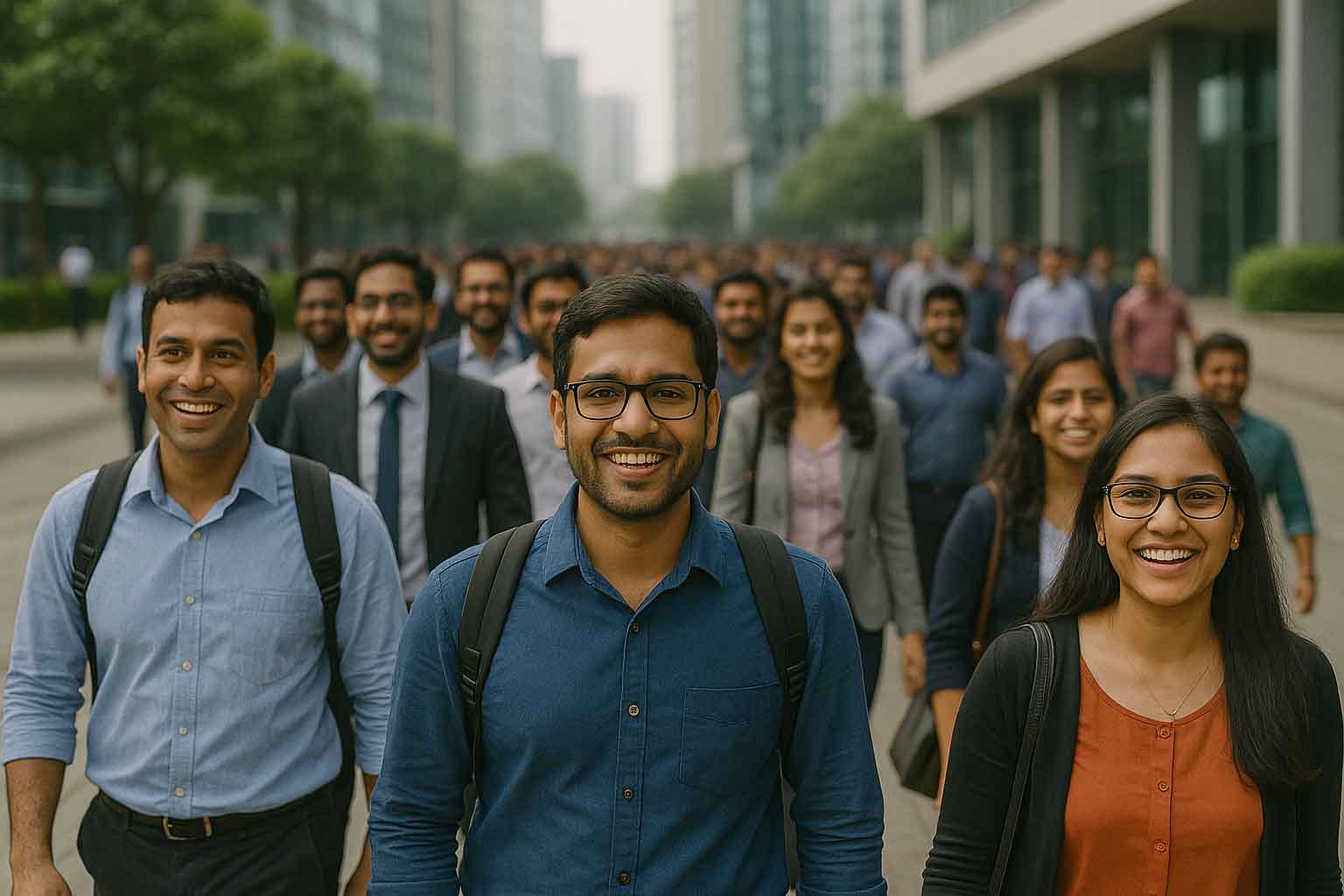Migration from India to Germany has accelerated at an unprecedented pace over the past decade, with analysts calling it a “migration miracle.” A new study by the German Institute for International and Security Affairs (SWP), together with a recent analysis by PubAffairs Bruxelles, shows how Indian nationals are fast becoming a cornerstone of Germany’s labour market and bilateral relations.
Surge in Numbers
In 2015, around 86,000 Indian nationals were living in Germany. By early 2025, that figure had grown to nearly 280,000 — more than tripling in just ten years. Most Indian migrants are concentrated in science, technology, engineering and mathematics (STEM) fields, where Germany faces acute shortages.
Unemployment among Indians in Germany stood at just 3.7 percent in February 2024, roughly half the national average. Many are younger and more educated than the German workforce, with gross monthly wages averaging €5,359 by the end of 2023 — far above the national median of €3,945.
Shifting Migration Pathways
Earlier, the EU Blue Card was the dominant route for skilled Indian workers. That profile is now diversifying. Student and trainee migration has surged, and many Indians are entering Germany through self-organised channels rather than traditional employer-driven programmes.
India has also become the top country of origin for student visas in Germany. In 2024, more than 25,000 visas were issued, and by 2025 over 50,000 Indian students were enrolled in German universities — the largest international student group. A DAAD survey in 2024 found that about 40 percent of Indian students planned to stay in Germany permanently after graduation.
Gender ratios are shifting as well: while men dominated migration flows in 2012 at 70 percent, by 2023 women accounted for 40 percent.
Bilateral Frameworks
The two countries signed a Migration and Mobility Partnership Agreement (MMPA) in May 2022, aiming to streamline processes for students, trainees and skilled workers. Under the pact, at least 3,000 young professionals are expected to move from India to Germany annually.
In April 2025, a sub-working group on labour migration was set up, involving officials from both governments. Germany has also issued a Skilled Labour Strategy for India, formally recognising the role of private recruitment agencies in worker mobility.
Economic and Strategic Impact
For Germany, Indian migration is filling urgent labour market gaps and supporting industries under pressure from demographic decline. For India, migration provides jobs abroad at a time when the domestic economy must create 7–9 million positions annually to absorb its working-age population. Remittances from Indians abroad reached about US$129 billion in 2024, representing 3.4 percent of India’s GDP.
Migration is increasingly seen as a pillar of Indo-German relations, complementing cooperation in climate action, digitalisation and artificial intelligence.
Challenges and Risks
Despite progress, risks remain:
- Recruitment Practices: Many private agencies operate without clear regulation, raising concerns about fraud, opaque fees and misrepresentation.
- Educational Standards: Weak screening of Indian student applicants has allowed low-quality institutions to dominate placements, with questionable degree recognition.
- Skill Gaps: Indian education often emphasizes theory, while German systems demand practical training. Recognition of Indian qualifications remains slow.
- Integration Issues: Small and medium German firms remain cautious about hiring foreigners, citing administrative hurdles and integration challenges.
In 2024, 167 Indian nationals were deported from Germany and 656 returned voluntarily. Under the MMPA, India must process readmission requests within 30 days, but delays are common.
Outlook
The SWP report recommends that Germany strengthen external infrastructure in India, digitise migration processes, and coordinate more closely with Indian states. Berlin also plans to launch a new “Work and Stay Agency” to centralise recruitment and visa processing.
India, meanwhile, is moving forward with migration reforms. In spring 2025, it passed the Immigration and Foreigners Bill and is preparing an Overseas Mobility Facilitation and Welfare Bill to modernise systems and safeguard workers.
Experts argue that the next phase of Indo-German cooperation must go beyond transactional labour flows to build a rights-based, fair, and sustainable migration framework. Only then, they say, will this “migration miracle” become a lasting model for both nations.



